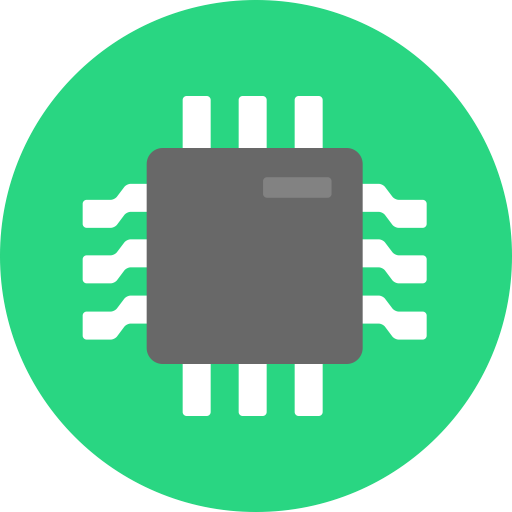

Informing the subject of an investigation and requesting comment to the allegations is considered proper journalism. Otherwise it comes off more as an attack.


Informing the subject of an investigation and requesting comment to the allegations is considered proper journalism. Otherwise it comes off more as an attack.
I’d view it as the longer you can keep using the current pair, the longer you can save money towards the eventual replacement.


My 10 year old ITX NAS build with 4 HDDs used 40W at idle. Just upgraded to an Aoostart WTR Pro with the same 4 HDDs, uses 28W at idle. My power bill currently averages around US$0.13/kWh.


I don’t get the term ‘technical debt’. Most people seem to use it to say “We took shortcuts previously, so now we need to go back and do things properly”.
FIrst, it’s a bad metaphor. You take on debt to invest in long term things that will provide future benefits. Telling the bean counters that you need to stop working on useful features to ‘pay back technical debt’ is not making things clearer to them.
Second, you write software, what the heck are you talking about? Compare to civil engineering. If an area gets busier and the existing narrow wood bridge is no longer suitible, engineers don’t say “Wow what idiots built this road with no eye to future growth?” It was built with the needs and resources of the time. To improve it, the bridge needs to be closed, demolished, and rebuilt with planning, labour and materials.
Instead software is empherial. You don’t need to demolish what’s there. No need to build temporary alternative infrastructure. No need for new materials and disposal of the old. It’s just planning and labour to redo a piece of software. It always seems so whiny when people complain about technical debt, as if switching to a different build system is anywhere close to the difficulty of fixing real life; replacing lead pipes with copper for an entire city, or removing asbestos from buildings.


I’ve always just wiped my work laptop and installed Linux.


That’s the fantasy. It’s full of politics and informal power structures though.


Well yeah, Hopoo sold the RoR franchise to gearbox 2 years ago.
Moving from a small indie studio to Valve they are giving up a lot of agency.


They’re still at it, they bought Campo Santo (Firewatch Devs) in 2018 and now their game In The Valley of Gods is never gonna happen, they worked on Alyx instead.
They poached a bunch of folks from Hopoo Games recently too.


I didn’t know about Until the End of the World (1991) till recently. Can’t say it was worth watching, but bounty bear was amazing.


The first time I opened an invite steam said I couldn’t join, but on a whim I opened it a week later and it worked. I still live in a different city so don’t know what happened.


Oh boy you’re gonna love Seal https://github.com/JunkFood02/Seal


Another aspect is the social graph. It’s targeted for normies to easily switch to.
Very few people want to install a communication app, open the compose screen for the first time, and be met by an empty list of who they can communicate with.
https://signal.org/blog/private-contact-discovery/
By using phone numbers, you can message your friends without needing to have them all register usernames and tell them to you. It also means Signal doesn’t need to keep a copy of your contact list on their servers, everyone has their local contact list.
This means private messages for loads of people, their goal.
Hey, we know this account sent this message and you have to give us everything you have about this account
It’s a bit backwards, since your account is your phone number, the agency would be asking “give us everything you have from this number”. They’ve already IDed you at that point.


They should bring back the original https://www.youtube.com/watch?v=tPYbzfwIJRA


KVMs usually jump from 2 inputs to 4. Ones that do 4 inputs and 4 monitors exist but you’re entering “enquire for price” territory.
Why do you need so many laptops/screens?


To me I’d consider Linux not standardized since anything outside the kernel can be swapped out. Want a GUI? There are competing standards, X vs Wayland, with multiple implementations with different feature sets. Want audio? There’s ALSA or OSS, then on top of those there is pulse audio, or jack, or pipewire. Multiple desktop environments, which don’t just change the look and feel but also how apps need to be written. Heck there are even multiple C/POSIX libraries that can be used.
It certainly can be a strength for flexibility, and distros attempt to create a stable and reliable setup of one set of systems.


I once had a coworker that used a mini PC instead of a laptop for work. Being lighter, and more powerful worked well for him.
My understanding is that each brand will contract out the design and manufacturing, with potentially totally different factories and people involved. So the same brand will have models that are built totally differently, in terms of quality and ethics. This happens from the cheapest no name products to big western brands. Make sure to check reviews for the specific model, and not blanket trust one brand to be ‘good’. Notebook check and robtech on youtube do mini PC reviews.
I feel you on the ethics side, and unfortunately it’s pretty difficult to ever avoid. You can try buying second hand, at least save something from landfill and get a bargain.


lol kinda, it was a real office with 3 staff: CEO, CFO, and assistant. I was weirded out seeing all three were ~20 years old. He said I could make my own subsidiary and be my own CEO one day. I asked for the parent company name and did a quick Google when he stepped out of the room for a second. Not only saw the MLM stuff but also a culture of employee abuse and hazing in the subsidiaries. I just walked out at that point.


“So it’s like a pyramid, but upside down”


ZFS doesn’t have fsck because it already does the equivalent during import, reads and scrubs. Since it’s CoW and transaction based, it can rollback to a good state after power loss. So not only does it automatically check and fix things, it’s less likely to have a problem from power loss in the first place. I’ve used it on a home NAS for 10 years, survived many power outages without a UPS. Of course things can go terribly wrong and you end up with an unrecoverable dataset, and a UPS isn’t a bad idea for any computer if you want reliability.
Totally agree about mainline kernel inclusion, just makes everything easier and ZFS will always be a weird add-on in Linux.
Would you consider making the LLM/GPU monster server as a gaming desktop? Depends on how you plan to use it, you could have a beast gaming PC than can do LLM/stable diffusion stuff when not gaming. You can install loads of AI stuff on windows, arguably easier.